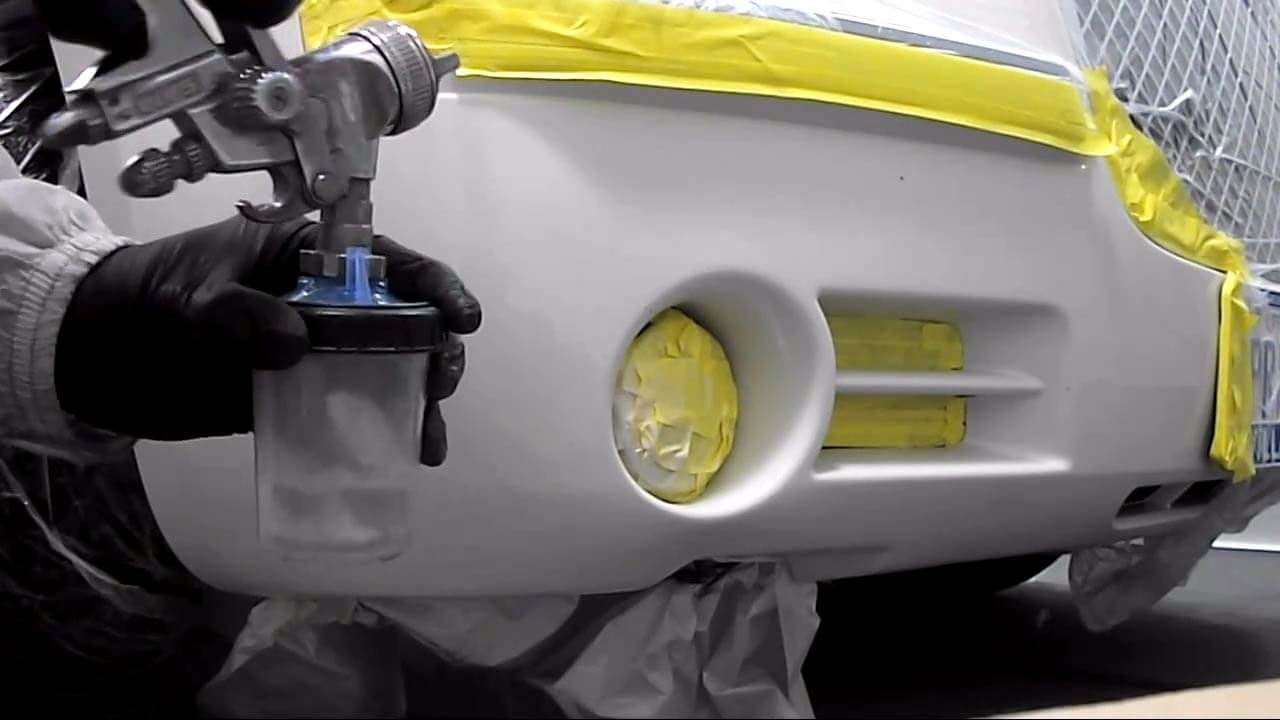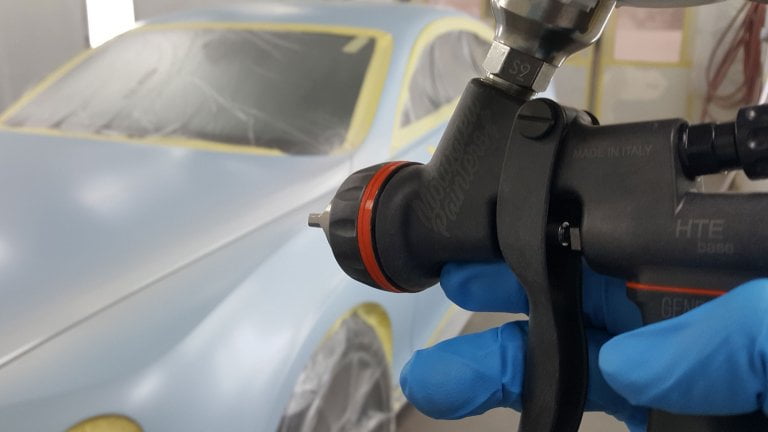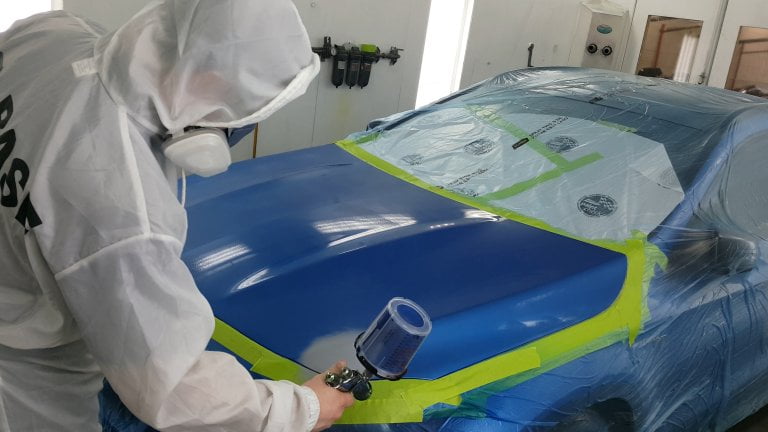How to Blend Clear Coat
Blending Clear Coat
From time to time it is not practical to clearcoat an entire panel. Blending clearcoat undetectably can be achieved but is not recommended because the blend can be broken down by UV Rays easily and the edge can eventually become visible. Most of the time paint manufacturers will not warranty this type of repair. When there is a style line available, backmasking off of that line may be preferred and easier then tapering out your clear. When blending mid panel try and find a narrow area such as a sail panel and also try and find a place on the side rather then top of the panel to minimize UV exposure.
Blend Preparation
You will want to start by cleaning the entire panel with soap and water, followed by a wax and silicone remover. Next you will want to polish your entire panel with a coarse cutting compound. This will further clean your panel and also sand it to allow for your clear coat blender to adhere later in the repair.
Clear Preparation
You will want to allow yourself a good amount of blending room for your basecoat as to keep it away from your clear blend. Sand the panel in your clear blend area with 1500 or finer up to where you can blend your clear out. Prep the rest of your panel as normal.
Spraying
Spray your first coat of clear a few inches before the 1500 or finer scratches end-point, fan out your clear to taper it out and avoid a hard edge. Bring your second coat just inside the end-point of your 1500 or finer scratches and try to fan it so the end of your taper ends at the edge of that sanding endpoint. Immediately Apply your clear coat
blender at the start of your taper and spray it just past the edge of your clear coat dry spray, go a bit further to be safe.
Polishing
Once dry you can wet sand the edge your blend with some 1500 or finer sandpaper and polish to achieve a perfect transition. To polish this successfully you should try to use lower speeds and generate less heat. If done correctly you will see no trace of your clear blend, this method also works with solid single stage colors.
Common Mistakes:
- Not Sanding / Polishing Far Enough – sometimes with harder colors you can take your blend further then you intended. Always give yourself plenty of room and polish further then you think you need to.
- Bringing an orientation coat to far – If you are using an orientation coat you must keep it well below your blend zone. This is just like base coat and can cause problems when blending clear. If you are using an over-reduced clear as an orientation coat then you can bring it into your blend. For the sake of simplicity keep your orientation coats below the blend area.
- Not fanning your clear – this will create a poor taper making blending difficult. This can make blending near impossible.
- Too aggressive polishing – when you polish your blend afterwards you want to do it at a moderate speed. Sometimes you can get away with it on a normal panel but in the blend zone it may damage your efforts to the point of needing a respray. Play it safe and keep the polisher on a lower setting.






Aw, this was an extremely good post. Spending some time and actual effort to make a good article…
but what can I say… I put things off a whole lot and don’t seem
to get anything done.
Blogging is about creating conversations and
joining others in progress. 0 and social media have
re-defined how we receive information and communicate.
That is the main point of combining: it is an option for reinvestment and
earning more and also as I said above it can become
a tool for stepping into a higher level of investing when several initial investments are integrated
into one.
Eye Opening topic on this website. My coworker and I were just talking about this. Awesome